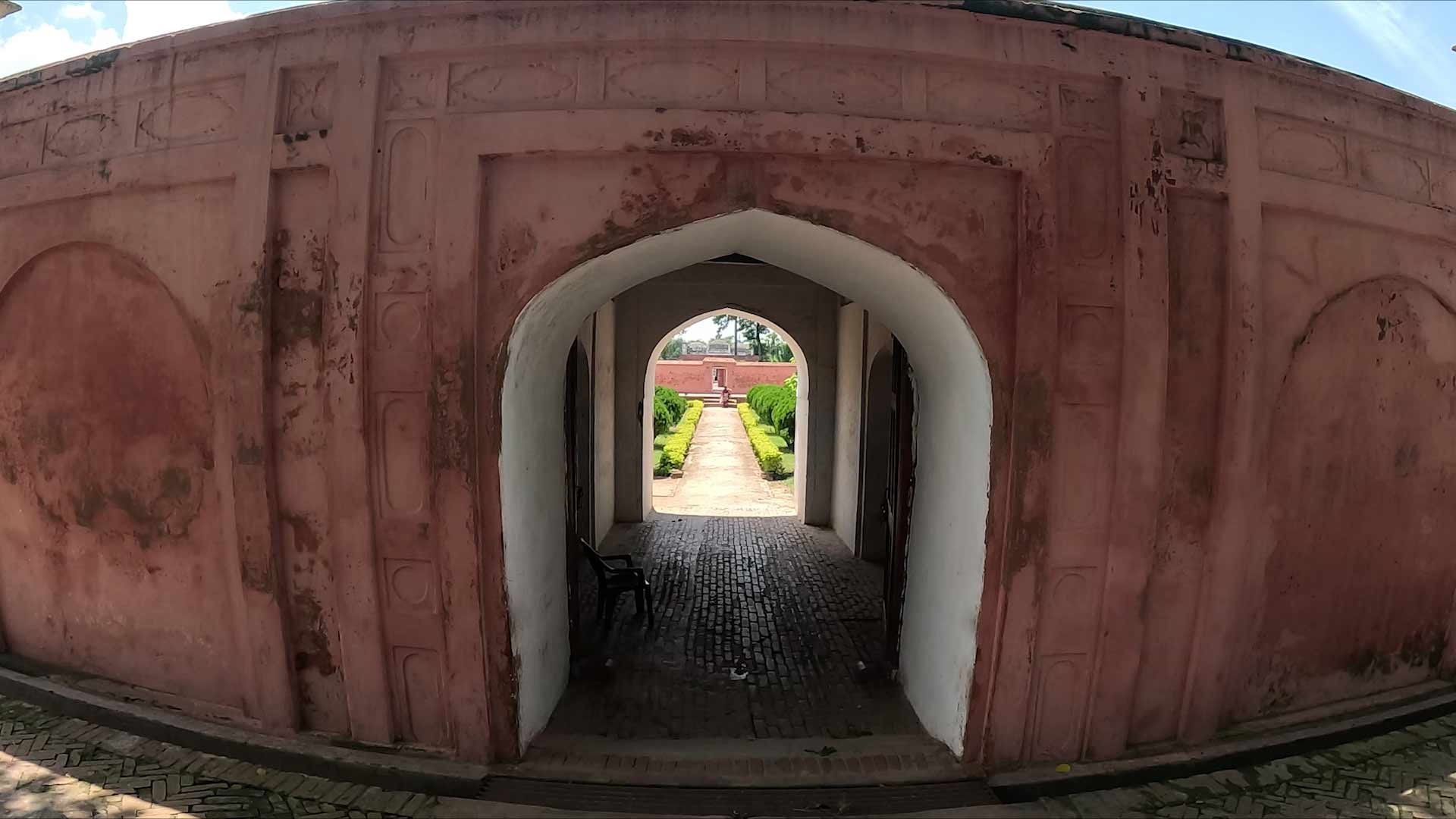Khoshbagh in Murshidabad is probably the most important historical place. At least it seems so to me. Because it is there that the last independent Nawab of Bengal-Bihar-Odisha, Siraj-ud-Daula, lies eternally asleep. There is a lot of negative information about him throughout the pages of history. However, no one can deny this true history that he was a pioneer of the then Indian War of Independence.
I boarded a large-sized boat from Sadarghat in Lalbagh to go to Khoshbagh. The fare was five rupee per person. Let me tell you a little bit here, this is the first time I have seen such a crude engine-powered boat. So, I was a little surprised. The Bhagirathi River, a witness to many events of the Nawab period, including the Battle of Plassey, continues to flow undisturbed even today.
It took about two to three minutes to cross the river. The distance from here to Khoshbagh is about one and a half kilometers. I have to take an auto. The fare is 15 Rupee per person. However, I had reserved 300 Rupee. Because apart from Khoshbagh, there are Siraj-ud-Daula’s palace, the memorial of Hirajheel, and the tomb of the second Nawab of Bengal, Shujauddin. Since they are not located in close proximity, I reserved for the convenience of travel.
Rural town. No noise. I have always liked villages. And if there is a historical connection with that village, then it is not a problem. I was looking around in surprise and thinking, maybe Nawab Alivardi Khan had once walked along this road with his grandson Siraj. A different feeling was working inside me.
In some time, I reached Khoshbagh. No ticket is required here. After passing through the main gate built in Mughal architecture, my eyes were filled with joy as I saw the surroundings. Soft grass is like a green carpet on both sides. Ancient trees stood. Very quiet and secluded. Surrounded by high walls.
Apparently, there are a total of 34 tombs here. To find out which tomb is whose, I hired a guide for 50 rupees. Although I could have paid 20 rupees. I paid more intentionally. I paid this honor to the old man, considering the two-price market. But before seeing the tombs, let’s know the history of Khoshbagh.
Khoshbagh means pleasure garden. Earlier it was called Khushbubagh. Because the burial ground was earlier decorated with fragrant flowering plants. The fifth Nawab Alivardi Khan built the garden on an area of 7.65 acres in imitation of the Jama Masjid in Delhi. He originally built it for his own tomb after his death.
Nawab Alivardi Khan used to come here for his evening leisure. His beloved grandson Siraj was young at that time. He would cross the Bhagirathi in a boat and spend a joyful time with his family here before returning to the court. There were various kinds of rose trees in this well-kept garden.
After 16 years of Nawabship, his grandson Siraj buried Alivardi Khan here as per his last wish. And eventually it became their family graveyard. However, out of the 34 people buried in Khoshbagh, 32 were killed. The exceptions were Alivardi Khan and Nawab Sirajuddaula’s wife Lutfunnesa.
Among the many tombs, only the grave of Nawab Alivardi Khan is the largest and tallest, and Nawab Siraj-ud-Daula’s grave is distinguished by his name engraved on a stone next to it.
Next to Siraj-Ud-daula is the tomb of his brother Mirza Mehdi, at the feet of Siraj Uddaula are the tombs of his wife Begum Lutfa and her companion Aleya.
At the same time, the daughters of Nawab Alivardi Khans, members of the family of Nawab Siraj Uddaula, Mohammadi Begh, who killed Nawab Siraj, the famous historian Golam Hossain, the boatman who betrayed Siraj and his family are also lying in Khoshbagh.
There are also graves of Siraj’s relatives and friends living in Dhaka, Patna and other places, who were summoned and killed.
There is a mosque in Khoshbagh. Alivardi Khan used to offer prayers in this mosque while staying in Khoshbagh.
Currently, the Khoshbagh shrine is about to disappear financially. The West Bengal government should pay special attention to this.
I left Khoshbagh with a sad heart. But as I was leaving, I said, I’ll come again. I have to come. History is very much alive here.

